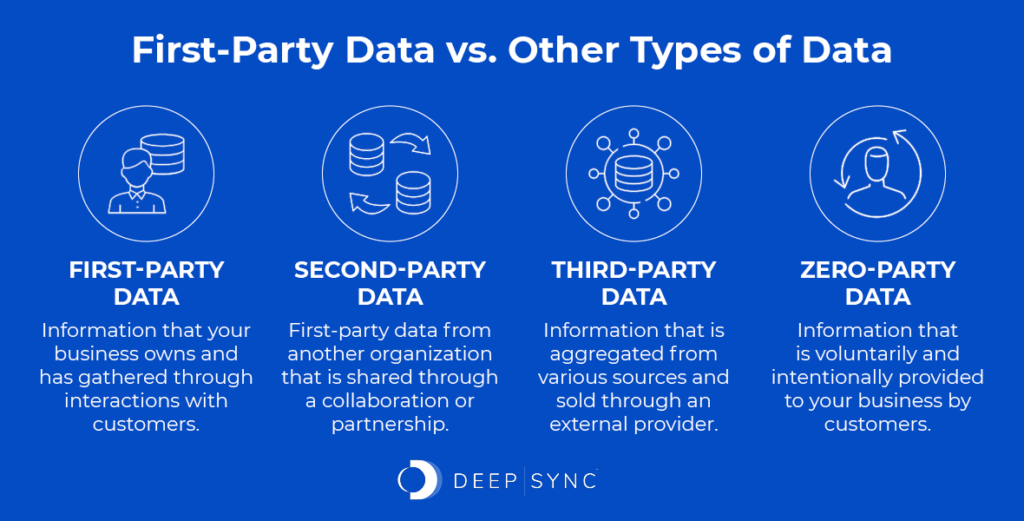When it comes to achieving your association’s goals, data is key. You need to set ambitious but reasonable goals, track your progress using metrics, determine whether you met those goals, and consider how you can improve outcomes in the future.
However, data isn’t just a way to measure progress; it can also be used strategically to reach your goals. Specifically, information about your members can relay key insights that help you accomplish goals like increasing retention and engagement, boosting revenue, and improving conference attendance rates. Much of this data is already available to you within your association management system; it’s just waiting to be used!
In this guide, we’ll explore the basics of using member data and how data analytics can benefit your association. Let’s get started!
How can associations get started with data analysis?
The process of data analysis involves taking raw data—likedetails about a member like their name, location, the date they joined, events they’ve attended, etc.—and transforming it into actionable insights. For instance, you might create a segment of members who frequently attend conferences and send them targeted email campaigns that recommend upcoming events they would be interested in.
Your member data is considered zero- or first-party data. First-party data is information organizations own and have gathered by interacting with customers while zero-party data is information your members share voluntarily through surveys or other interactions.

Because your data contains members’ private information, it’s important that you protect their privacy. These best practices will help you collect, store, and analyze data in an accurate and secure manner:
- Collect data ethically. Ethical data collection considers and respects concerns like individuals’ privacy, transparency, and appropriate use of data. Harvard Business School recommends applying the following five principles of data ethics to protect both your members and your organization: ownership, transparency, privacy, intention, and outcomes.
- Store member information in a robust CRM. Once you’ve collected data about your members, it’s essential that you store member records in a secure location. Use a CRM that is committed to maintaining privacy. As an added benefit, CRMs can integrate with other technology you use to consolidate data from a variety of sources, eliminating cumbersome data silos.
- Prioritize data hygiene. Data hygiene is the practice of auditing your data files and removing duplicate and outdated entries. Fields with typos, inaccurate data, and non-standardized formatting should be corrected. Maintaining high data hygiene standards will remove unusable information from your file and make your findings more accurate.
Following these best practices will not only safeguard members’ personal data but will also protect the trust they have vested in your organization. Additionally, you’ll be able to recognize and act on actionable insights sooner when your dataset isn’t bogged down with duplicate data or outdated entries.
What are the top benefits of leveraging data?
Let’s take a close look at the key benefits of incorporating data into your strategies:
1. Helps you understand members.
Knowing details about a member—like their location, career highlights, and history with your association—gives you more context about the member and why they behave in certain ways.
Imagine that your member is the subject of a painting. As you gain information about the member, the painting expands to show more of the background, other “characters,” and objects that further explain who they are.
Using these findings, your association can personalize member experiences through:
- Tailored member engagement: Create member engagement strategies that are based on your members’ interests and preferences. For example, you might use different engagement strategies for new members (e.g., enrolling them in a mentor program) compared to those who have been members for years (e.g., asking them to lead a webinar or educational course).
- Improved member services and resources: Learn about the challenges members are facing at work, the topics they are interested in, and the skills they want to gain or improve. Then, create workshops, conferences, blog posts, webinars, and educational courses that address the things members want or need from your association. This will also help your association allocate its time and money toward offering resources members will actually use.
- Targeted recruitment: Make sure you get in front of the right audience by targeting prospects who match your current member profile. If needed, create one or more member personas that detail traits of your average member (e.g., demographic and psychographic information, professional experience, interests, lifestyle, etc.).
Keep in mind that data hygiene is very important when it comes to creating personalized materials and experiences. After all, one outdated home address could result in you inviting a member to an event in Chicago only to find out that they’ve moved to San Diego. Make sure you’ve recently audited your member records for inaccuracies to ensure insights are fresh and accurate.
2. Guides marketing efforts.
Marketing your association can involve promoting engagement opportunities to current members as well as reaching out to prospects. This can be an expensive, overwhelming undertaking without much reward if you aren’t using data to guide your strategy.
Fortunately, your member data is ripe with helpful hints that can take your marketing campaigns from lukewarm to captivating. Using what you know about members, adjust the following factors in your next campaign:
- Communication channels: Use feedback from surveys and performance data from past campaigns to understand which channels members engage with most. Then, create content on those channels for your marketing campaigns.
- Content strategy: Identify trends in historic marketing data to determine which topics, formats, and timing garner the most attention and conversions. For example, if email campaigns that promote early access to a webinar are highly successful, do more of them.
- Messaging and tone: Track similar trends, but make note of how different tones (e.g., friendly, formal, humorous, or authoritative) impact marketing performance. Additionally, pay attention to how members engage with your resources; if many of them prefer blog content by a specific author or attend webinars by a certain speaker, try mimicking the tone of those resources.
Many marketers also rely on third-party data (data gathered by external sources) to track large-scale patterns among a given audience or help fill in any gaps in their own files. This strategy can help your association establish hypotheses about its audience and take educated risks. Additionally, you can research untapped markets to better understand what messages will reach and resonate with them.
3. Increases retention.
Offering personalized experiences makes members feel understood by your association. Those experiences also provide much more value to them by addressing their unique needs and challenges.
For example, let’s say your dataset and recent surveys from members reveal that many of them are struggling in the job market. Specifically, they aren’t having luck getting hired, are facing layoffs, and are struggling to create competitive resumes. Your association sees an opportunity to take action by helping your members with their careers and providing the value that your organization promises.
First, you make improvements to your networking strategy. Alongside regular networking events, you follow Fonteva’s recommendation to set up online member directories to encourage socializing and developing new connections. Additionally, you hold Q&A sessions with job recruiters to help members learn what employers are looking for and provide a career coach who can give members interview and resume advice.
By providing resources like these that meet members’ current needs, you could help them land their next job or make important professional relationships. Members will remember this help once the renewal period comes around, leading to increased retention.
Data tells you more about your members’ wants, needs, and expectations of your association, allowing you to meet them more effectively. And by enriching your data with information from third-party sources, you can even learn more about prospective audiences you haven’t reached yet. These strategies empower your association to level up its communications, content, and other resources, improving member engagement and retention.












0 Comments